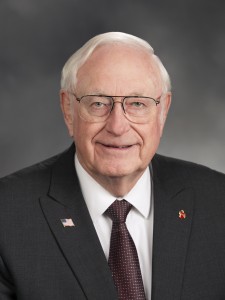Over the weekend a news story highlighted one of the big problems the Legislature faces this year. We’re mandating all-day kindergarten and reducing class sizes in grades K-3. And if we do that, we’re going to need to build more classrooms.
The story got it right, but it’s not exactly news around here. We’ve been working on the problem all session – and in the Senate this week we passed legislation to address the problem. Our Senate capital budget proposal launches a six-year program to build more than 2,100 classrooms across the state. It’s a good example of what we’re trying to do with our capital budget this year — putting our money where it has the biggest impact on the people of the state.
Last year we broke with tradition in the Senate and decided not to pass a supplemental capital budget. The capital budget is where we pay for things that last, like buildings, parks and land. Most of it is financed with debt, primarily with 25-year bonds. We found ourselves taking a long, hard look at the way we spend money, and we decided it was a good time to hit the pause button.
What caused us to draw the line was a proposal for a new office building just north of the Capitol campus, on the site of an old bowling alley that has been used for office space and various other purposes over the years. The plan was to build a grand new headquarters building for the State Patrol – something that could be built for lower cost elsewhere. State office projects like these have left us with a bad taste, after our experience with a big new data center. It was completed just as the information-technology biz was moving to the cloud. The state is still trying to rent out the space.
This one-year pause has given us a chance to consider our priorities and get them straight. Our $3.9 billion capital budget proposal puts an emphasis on the programs that matter most to our citizens.
- We emphasize schools with our K-3 plan, launching a nearly billion-dollar program with a $280 million expenditure over the next two years. When other school-construction programs are counted, one out of every four capital-budget dollars is going to school construction, the highest proportion in over 20 years.
- We spend $30 million to address a shortage of beds in our community-based mental-health facilities.
- We provide grants for local public works projects that ordinarily would be financed with loans.
- We spend $163 million to reduce a backlog of toxic waste cleanup projects.
- We temporarily redirect money that goes to habitat acquisition to clear up a backlog of park-development projects, completing 80 local park and trail projects.
These projects address the state’s most vital needs, and boost jobs and economic development. These are just the broad strokes, of course – we also pay for hundreds of projects across the state, large and small. The House budget puts nearly $140 million into costly new state office buildings – we don’t. I like to think our proposal reflects a new, more sensible way of doing business.
State Sen. Jim Honeyford, R-Sunnyside, is vice chair of the Senate Ways and Means Committee in charge of the capital budget.









